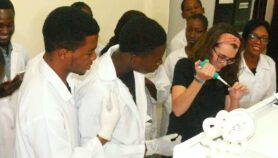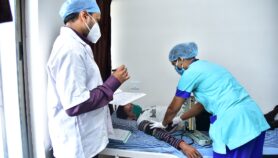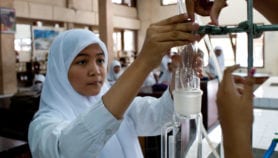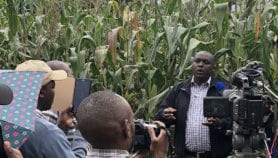Send to a friend
The details you provide on this page will not be used to send unsolicited email, and will not be sold to a 3rd party. See privacy policy.
Scientific research in India needs to integrate better with rural development issues say Rajeswari S. Raina and Kasturi Mandal.
India’s Prime Minister Manmohan Singh promised in January 2012 a massive expansion of funding and facilities for Indian science. The 12th Five-Year Plan (2012–2017) pledges inclusive development through scientific knowledge and technological interventions for which scientists are expected to work on rural problems. Singh and scientists, however, need to be aware of the contexts, processes and agencies that shape the effectiveness of science and technology (S&T) for rural India. There are many institutional constraints; and hence, many a slip between the cup and the lip!
Institutional constraints
Despite significant advances in science, livelihoods and development demands of rural India have gained little from the formal S&T system. Inclusive development demands that S&T be oriented to rural India that supports livelihoods and agricultural systems of 833 million Indians.
Since markets and commercialisation of rural technologies are not yet fully developed, S&T applications for rural livelihoods, such as agriculture, shelter, food, education and healthcare are delivered through schemes or programmes. Rural India gets its S&T applications mainly through four line departments — rural development; agriculture and allied sectors; irrigation and flood control; and special area development — and their schemes.
The share of allocations to these four departments is steadily decreasing in the overall development plan allocations (from 23 per cent to 17.5 per cent of total outlay from the sixth to the 11th Five-Year Plans). Moreover, the schemes are designed for mere disbursement, with little adaptive research capacities to address technologies for location-specific problems. Specific target and control mechanisms curtail whatever little adaptation that a local officer, say at the block or district level, can make.
Post-independence in 1947, India’s national programme planning and implementation started with a geographical area approach, but changed to a sectoral approach in the 1970s. S&T for rural development, likewise, entered each sector — agriculture, cottage and small-scale industry, water, rural housing, health, and education – ignoring the relationships between work, income, health, morbidity and the environment.
The highly centralised S&T establishment and the compartmentalisation of rural development into sector-specific silos ensured that ‘progress on the rural front has been thwarted essentially by over-centralisation, bureaucratisation, and fragmentation of programmes’ [1]. Moreover, the S&T establishment acknowledges only publications and patents as its outputs, foiling efforts to enable institutional and technological innovations for rural India.
Reversing the trend
There have been some welcome efforts to counter this excessive centralisation. The Mahatma Gandhi National Rural Employment Guarantee Act in 2007, designed to guarantee rural employment, has increased rural development expenditure and brought several S&T applications onto a single platform for employment generation. Most importantly, it can revive the earlier area approach and enable decentralised innovation capacities.
In the next five-year plan, success in S&T applications for rural development will depend on how these decentralised innovation capacities are developed and used. For instance, a national scheme initiated in 2007, the Rashtriya Krishi Vikas Yojana, disburses a quarter of the agriculture allocation directly to state governments. This could be leveraged for stronger state-level S&T efforts and innovation. Maharashtra state, for example, has adopted a decentralised research and innovation approach for monitoring and controlling pests with online data exchange across villages and among state and national experts.
Need for better integration
Despite these welcome efforts, gaps remain. Scientific research needs more support to better integrate with rural development issues. There is a need for a new S&T strategy based on an understanding of rural contexts. Most agricultural research and development, for instance, focuses on irrigated, chemical inputs-based cereal production systems, neglecting rainfed farming (60 per cent of India’s arable lands) which has diverse inter- and multiple-cropping systems and low input use, soil moisture management techniques, seed systems, livestock, and inland fisheries.
Agriculture extension today is reduced to disbursement inputs and advisories; targets that have been earmarked from above – district and state level offices. Social sciences that can play a mediation role between science, policy making and social realities are weak in the Indian S&T system. The state’s capacity to facilitate the requisite intermediation is crucial. China, for example, has enabled major opportunities for scientists to work on rural problems, appointing over 170,000 S&T commissioners to mediate between research labs, universities, farms and firms.
Within the scientific research establishment, there prevails a division of labour between the central agencies (designated departments or research councils) and the universities which are relegated to do only teaching. A beacon of hope today is that the state governments, especially of smaller states, are building S&T capacities giving priority to delivering development outcomes for their own rural populations. But this relatively decentralised S&T capacity runs into infrastructure problems.
S&T effort and extension support to the 17 types of rural non-farm livelihoods are meagre; not one of these occupations receives a fraction of the research attention and extension support that agriculture does. Technological needs of rural manufacturing are ignored.
System-wide reform is essential; of S&T, public administration and markets for rural India. More funds and expansion of S&T may not help inclusive development.
Rajeswari S. Raina and Kasturi Mandal work at the National Institute for Science, Technology and Development Studies(NISTADS), New Delhi. They draw from the Systems of Innovation for Inclusive Development (SIID) project, Centre for Policy Research (sponsored by IDRC, Canada) and India Science and Technology 2010-11 (CSIR-NISTADS, 2012).
References
[1] Ghosh, A. 1992 p. 33 Planning in India- the challenge for the 90s, New Delhi: SAGE.
More on Capacity building

Script media release
Journalists offered ‘big break’ mentoring opportunity from Radio Nigeria
03/04/19












